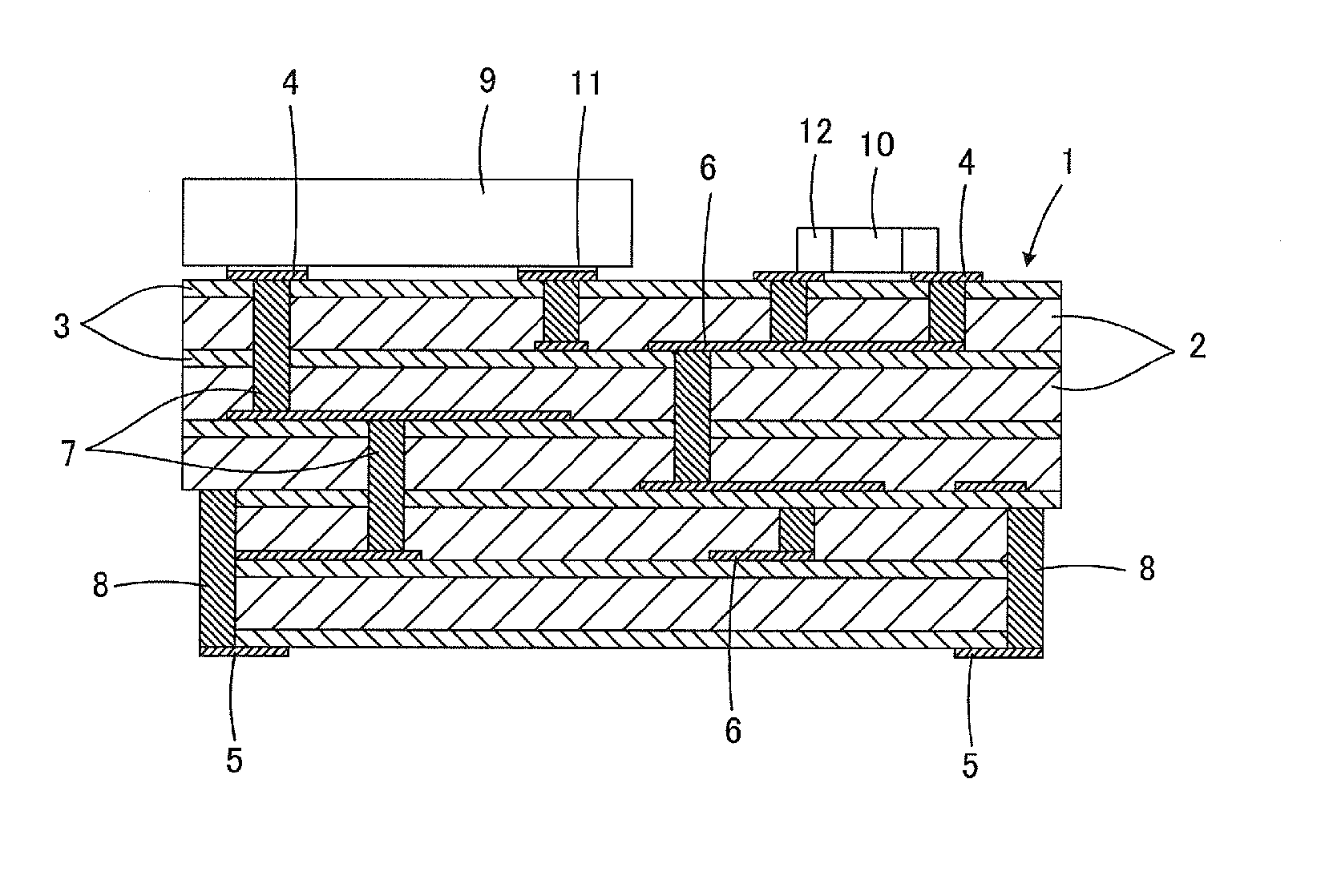Multilayer ceramic substrate
a ceramic substrate and multi-layer technology, applied in the direction of fixed capacitors, synthetic resin layered products, solid-state devices, etc., can solve the problem of not being able to achieve the desired substrate strength, and achieve the effect of increasing strength
- Summary
- Abstract
- Description
- Claims
- Application Information
AI Technical Summary
Benefits of technology
Problems solved by technology
Method used
Image
Examples
experimental example
[0046]Next, an experimental example will be described which was carried out for confirming the advantageous effects of preferred embodiments of the present invention.
(1) Preparation of Green Sheets for Defining Base Material Layers
[0047]As starting raw materials, respective powders of SiO2, BaCO3, Al2O3, ZrO2, CaCO3, B2O3, MnCO3, TiO2, and Mg(OH)2 were prepared each with a grain size of 2.0 μm or less. Next, these starting raw material powders were weighed so as to provide the composition ratios shown in Table 1, and subjected to wet mixing and grinding, and then to drying, and the obtained mixture was subjected to calcination at 750° C. to 1000° C. for 1 to 3 hours to obtain raw material powders for base material layers. The BaCO3 was turned into BaO after the firing, the CaCO3 was turned into CaO after the firing, the MnCO3 was turned into MnO after the firing, and the Mg(OH)2 was turned into MgO after the firing. It is to be noted that the respective starting raw material powders...
PUM
| Property | Measurement | Unit |
|---|---|---|
| Pressure | aaaaa | aaaaa |
| Pressure | aaaaa | aaaaa |
| Pressure | aaaaa | aaaaa |
Abstract
Description
Claims
Application Information
 Login to View More
Login to View More - R&D
- Intellectual Property
- Life Sciences
- Materials
- Tech Scout
- Unparalleled Data Quality
- Higher Quality Content
- 60% Fewer Hallucinations
Browse by: Latest US Patents, China's latest patents, Technical Efficacy Thesaurus, Application Domain, Technology Topic, Popular Technical Reports.
© 2025 PatSnap. All rights reserved.Legal|Privacy policy|Modern Slavery Act Transparency Statement|Sitemap|About US| Contact US: help@patsnap.com


